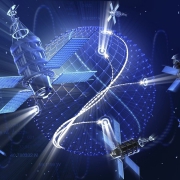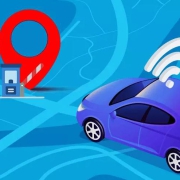Is Visual Remote Management of Fleet Important for Enterprises
In today’s fast-paced business world, transportation has become an important component of enterprises around the world. The company relies on their fleet to provide goods and services to customers in a timely and cost-effective manner. Therefore, managing and monitoring these fleets is crucial for ensuring efficient operations and maximizing profits. This is the significance of fleet visualization and remote management.
Fleet visualization refers to the ability to track and monitor fleets using advanced technology, providing real-time information about the location and performance of company vehicles. This information is crucial for businesses to optimize their operations and make informed decisions, helping to improve safety, efficiency, and reduce costs. On the other hand, remote management enables enterprises to manage their fleets without having to be on-site, which is particularly important in today’s remote work world.
This article will delve into why fleet visualization and remote management are crucial for enterprises, and how they can benefit companies in different industries.
Improve visibility and control
One of the most significant advantages of fleet visualization and remote management is the increased visibility and control of the fleet. Enterprises can track the movement of their vehicles in real-time, monitor driver behavior, and receive alerts for any potential issues that may arise. This helps them make wise decisions, optimize their operations, and thereby improve productivity and profitability.
Real time monitoring also helps businesses ensure the safety of their drivers and other road users. By monitoring driving patterns, companies can identify dangerous driving behaviors and promptly address them, reducing the likelihood of collisions and other accidents.
Cost optimization
Fleet visualization and remote management systems can also help enterprises optimize costs. With real-time data on driving behavior and fuel consumption, companies can identify areas of inefficiency and take action to reduce fuel consumption, vehicle wear, and maintenance costs. By optimizing these areas, enterprises can reduce operating costs and increase profits.
Route optimization
Fleet visualization and remote management also enable enterprises to optimize their routes by providing real-time traffic updates, alternative routes for road closures, and traffic congestion situations. This helps businesses reduce travel time, improve driver productivity, and save fuel costs.
Strengthen customer service
With real-time information about the location of their fleet, companies can provide accurate delivery times and updates on the status of goods to their customers. This helps to improve customer satisfaction and establish brand loyalty, which is crucial in today’s fiercely competitive business environment. Enterprises can also provide proactive notifications about delays or issues, enabling customers to make corresponding plans and mitigate potential negative impacts.
Compliance
Meeting regulatory requirements is crucial for businesses, especially in highly regulated industries such as healthcare, food and beverage, and pharmaceuticals. The fleet visualization and remote management system helps businesses comply with regulatory requirements by providing detailed records of vehicle movement, driver behavior, and maintenance plans. This helps companies maintain accurate records for audit purposes and avoids expensive fines and penalties.
Fleet visualization and remote management are important tools that enable enterprises to optimize their operations, reduce costs, and improve security. With real-time information about the sports and performance of their fleet, companies can make informed decisions to help them improve customer service, comply with regulatory requirements, and establish brand loyalty. The benefits of implementing these systems far outweigh the initial costs, making them essential for companies looking to improve efficiency and profitability. Therefore, enterprises that have not yet invested in these systems should consider doing so to maintain competitiveness and meet the constantly changing needs of their customers.








